Mt. Fuji and Environs Shuzenji, Izu Peninsula, SHIZUOKA 4 Days 3 Nights
- Day 1
- Tokyo – Mt. Fuji – Shuzenji
Travel from Tokyo to Mt. Fuji by private car.

Continue on your way by driving the scenic Fuji Subaru Line up to Mt. Fuji 5th station. This is a great place for sightseeing, with incredible views of the surrounding landscape. People who climb the mountain often start their trek here. This 5th station is also known as Yoshidaguchi 5th station and is the most popular station on Mt. Fuji because of its easy access.
In summer, climbing Mt. Fuji is very popular for both Japanese and foreigners. Especially popular is to climb through the night to watch the sunrise from the summit. Mt. Fuji is considered one of the “Three Holy Mountains” along with Mt. Tate and Mt. Haku, and is a symbol of Japan; the mountain and its environs are registered as a UNESCO World Heritage site.
At the mountain’s base is the beautiful Fujiyoshida Sengen Shrine, dedicated to Princess Konohanasakuya, the Shinto goddess of Mt. Fuji. For centuries, pilgrims have passed through the shrine and offered a prayer to the sacred mountain before continuing their trek. Behind the shrine is the Yoshida trailhead, which leads up the mountain to the summit, although most climbers start at the 5th station, which shortens the climb by about five hours.
*Advance booking is required for a guide.
If you are keen to learn more about Mt. Fuji, you may join one of these three activities to discover the famous mountain.
Option 1 – Explore Mt. Fuji Lava Caves
If you want a truly special and unique experience in Japan, check out the Mt. Fuji Lava Caves. In addition to the caves, our guides will introduce you to the wonders of the famous Aokigahara forest in the Mt. Fuji foothills, with its strange, mysterious world of eerie silence, darkness and tranquility.
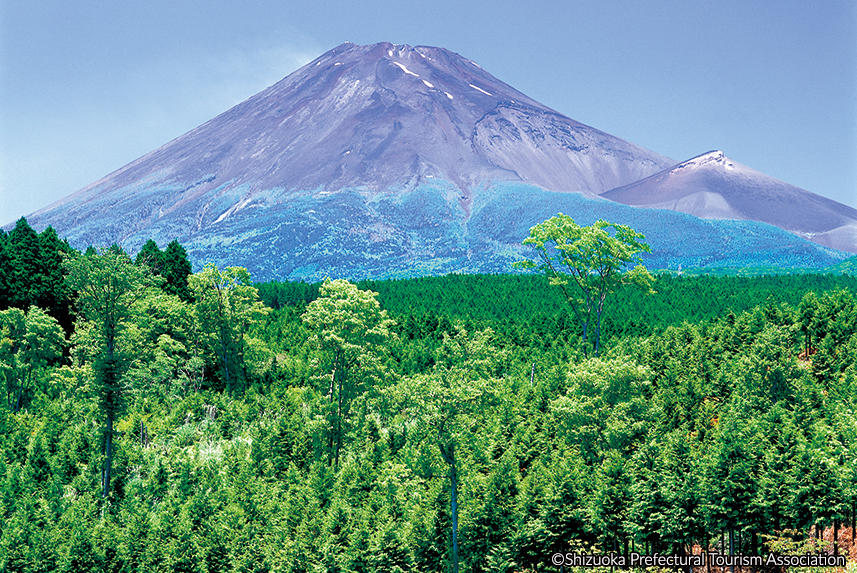
Option 2 – Nature walk in the forest near Mt. Fuji
The foothills of Mt. Fuji are a great place for a nature hike to learn about the fascinating birds and plants of this area. This tour is perfect for anyone interested in enjoying the natural world surrounding Mt. Fuji, with a guide who is well versed in the local flora, fauna and geology. This tour can take place in various locations, depending on which is the most convenient.
*Available in summer only
Option 3 – Trekking in Houei Crater
Though it hasn’t erupted in hundreds of years, Mt. Fuji is still an active volcano. Our Houei Crater trekking tour starts from the 5th station, from where we will hike to the 6th station and beyond to admire the magnificent views from the Houei Crater, as well as discover the tough, resilient plant life at the tree line and the craters formed by previous eruptions.
*Available in summer only
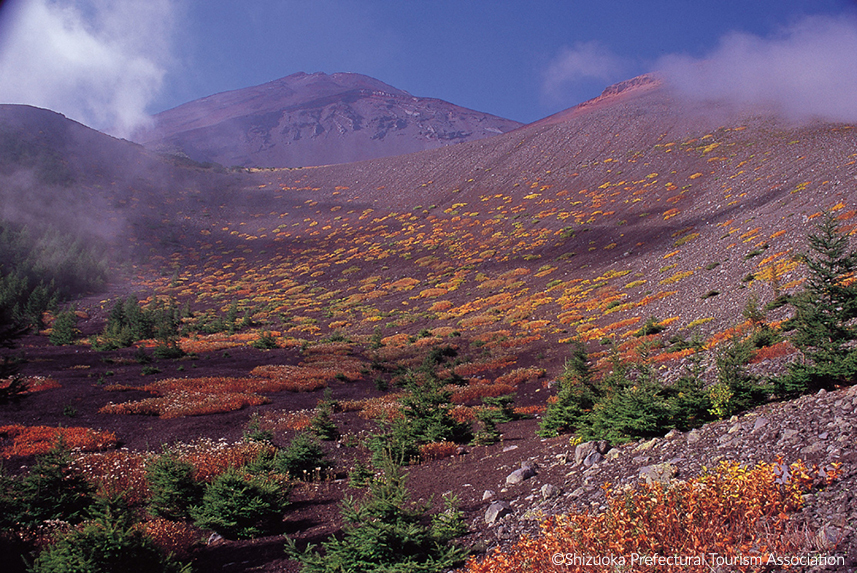
In the afternoon you will leave for Izu, a city famous for its hot springs and beautiful views of Mt. Fuji.
Check in at the ryokan in Izu. Ryokan Collection has several member ryokan in this area.
Asaba
The beautiful Asaba ryokan has some 350 years of history to draw upon as it provides extraordinarily fine service and an exemplary traditional experience. The most striking feature of Asaba is a beautiful Noh stage set in the middle of a pretty pond, where the traditional plays are performed. The stage, given to the ryokan as a gift over a century ago, is the perfect place to experience this fascinating form of theater, with its portrayals of tragedy and comedy, family, love, murder, and redemption.
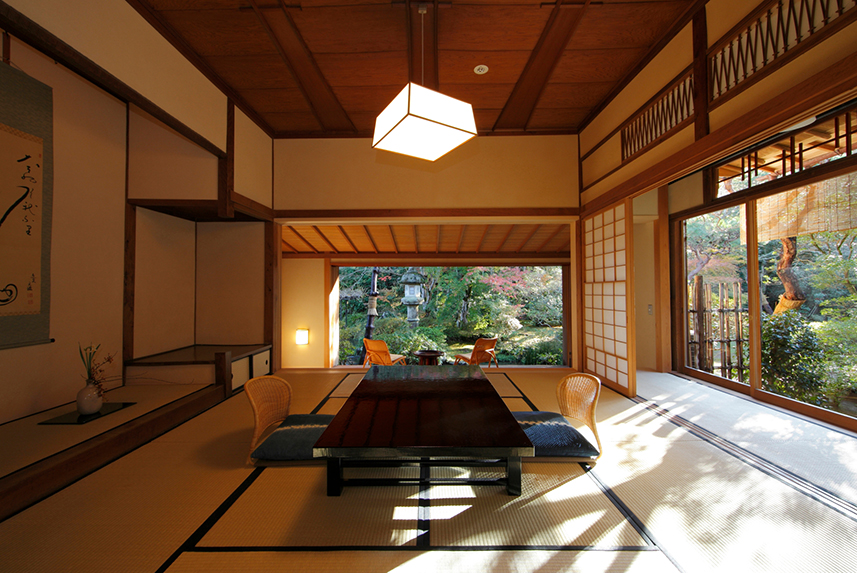
Yagyu No Sho
This serene ryokan is a fine example of a top-class
The fine traditional architectural design of its rooms, and the staff’s exemplary service embodies the concept of omotenashi. With its exquisite beauty and sublime simplicity, staying there is like embarking on a trip through time.
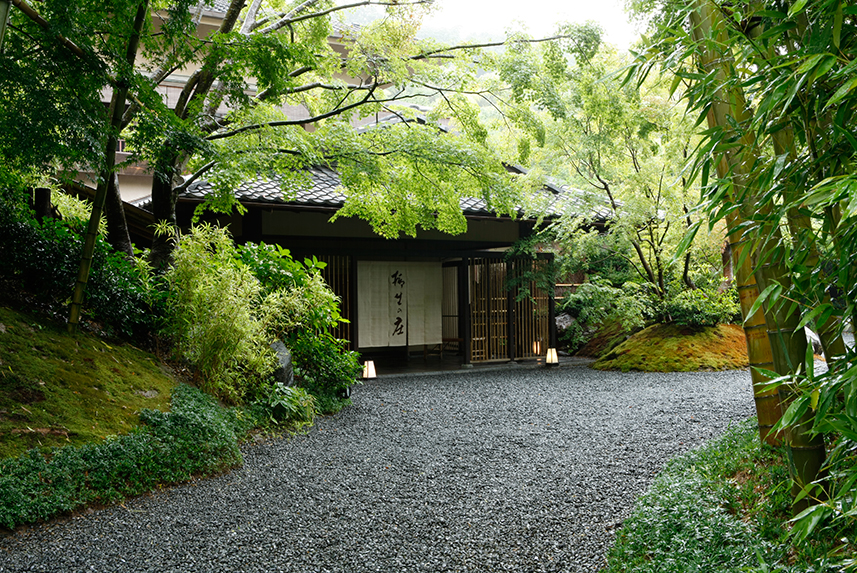

Continue on your way by driving the scenic Fuji Subaru Line up to Mt. Fuji 5th station. This is a great place for sightseeing, with incredible views of the surrounding landscape. People who climb the mountain often start their trek here. This 5th station is also known as Yoshidaguchi 5th station and is the most popular station on Mt. Fuji because of its easy access.
In summer, climbing Mt. Fuji is very popular for both Japanese and foreigners. Especially popular is to climb through the night to watch the sunrise from the summit. Mt. Fuji is considered one of the “Three Holy Mountains” along with Mt. Tate and Mt. Haku, and is a symbol of Japan; the mountain and its environs are registered as a UNESCO World Heritage site.
At the mountain’s base is the beautiful Fujiyoshida Sengen Shrine, dedicated to Princess Konohanasakuya, the Shinto goddess of Mt. Fuji. For centuries, pilgrims have passed through the shrine and offered a prayer to the sacred mountain before continuing their trek. Behind the shrine is the Yoshida trailhead, which leads up the mountain to the summit, although most climbers start at the 5th station, which shortens the climb by about five hours.
*Advance booking is required for a guide.
If you are keen to learn more about Mt. Fuji, you may join one of these three activities to discover the famous mountain.
Option 1 – Explore Mt. Fuji Lava Caves
If you want a truly special and unique experience in Japan, check out the Mt. Fuji Lava Caves. In addition to the caves, our guides will introduce you to the wonders of the famous Aokigahara forest in the Mt. Fuji foothills, with its strange, mysterious world of eerie silence, darkness and tranquility.

Option 2 – Nature walk in the forest near Mt. Fuji
The foothills of Mt. Fuji are a great place for a nature hike to learn about the fascinating birds and plants of this area. This tour is perfect for anyone interested in enjoying the natural world surrounding Mt. Fuji, with a guide who is well versed in the local flora, fauna and geology. This tour can take place in various locations, depending on which is the most convenient.
*Available in summer only
Option 3 – Trekking in Houei Crater
Though it hasn’t erupted in hundreds of years, Mt. Fuji is still an active volcano. Our Houei Crater trekking tour starts from the 5th station, from where we will hike to the 6th station and beyond to admire the magnificent views from the Houei Crater, as well as discover the tough, resilient plant life at the tree line and the craters formed by previous eruptions.
*Available in summer only

In the afternoon you will leave for Izu, a city famous for its hot springs and beautiful views of Mt. Fuji.
Check in at the ryokan in Izu. Ryokan Collection has several member ryokan in this area.
Asaba
The beautiful Asaba ryokan has some 350 years of history to draw upon as it provides extraordinarily fine service and an exemplary traditional experience. The most striking feature of Asaba is a beautiful Noh stage set in the middle of a pretty pond, where the traditional plays are performed. The stage, given to the ryokan as a gift over a century ago, is the perfect place to experience this fascinating form of theater, with its portrayals of tragedy and comedy, family, love, murder, and redemption.

Yagyu No Sho
This serene ryokan is a fine example of a top-class
The fine traditional architectural design of its rooms, and the staff’s exemplary service embodies the concept of omotenashi. With its exquisite beauty and sublime simplicity, staying there is like embarking on a trip through time.

- Day 2
- Shuzenji
While you are staying at the ryokan you can join activities that you can only experience in this area.
In the morning, you could visit chikurin Temple, which was established in 807 by Kobo Daishi as a temple of Shingon Buddhism. It is also known as the place where the second shogun of the Kamakura era, Minamoto no Yoriie, was imprisoned. You can experience Zazen meditation in the morning. The temple is open to the public every Tuesday from 9:15.
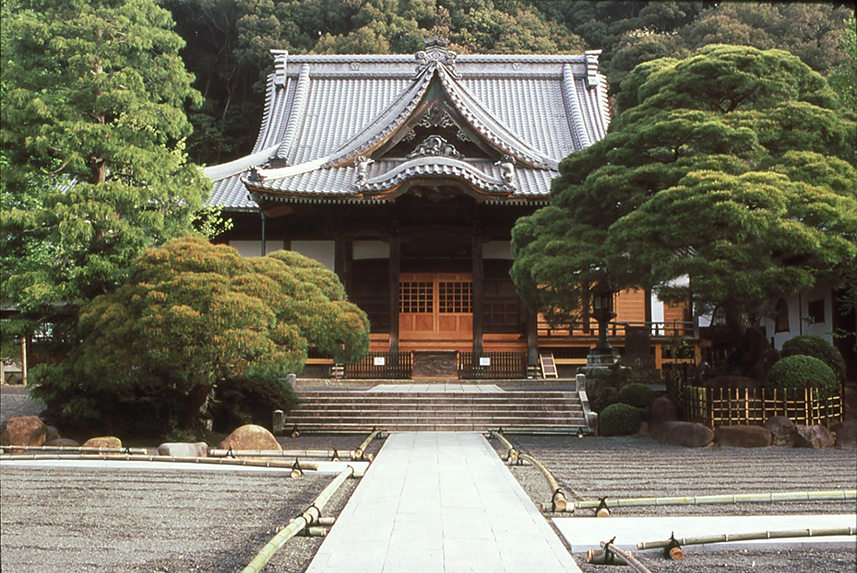
Stroll around the lovely onsen town of Shuzenji. Tokko-no-yu is Shuzenji’s oldest hot spring. It’s easy to find – it’s a popular landmark in the center of the town and is now used as an ashiyu footbath.
Continue on to Shigetsuden, which, dating from the 13th century, is the oldest wooden building in Izu. Built to commemorate the second Shogun of Japan, Minamoto-no Yoriie, who died in 1204, Shigetsuden is now used as a library of Buddhist sutras dedicated to his memory.
Next to Shigetsuden, you can find the grave of Shogun Minamoto-no-Yoriie, an important figure in Japanese history. A highly intelligent and capable military leader, he also invited discord with the powerful Hojo clan. He was imprisoned at Shigetsuden and assassinated when he was only 23.
Take a little rest at Chaan Fuyo and have Japanese matcha green tea and some sweets.
There are lots of small shops and cafés in the town, and for a peaceful respite you might stop by Chikurin no komichi, a small bamboo glade, to rest and ease your mind.
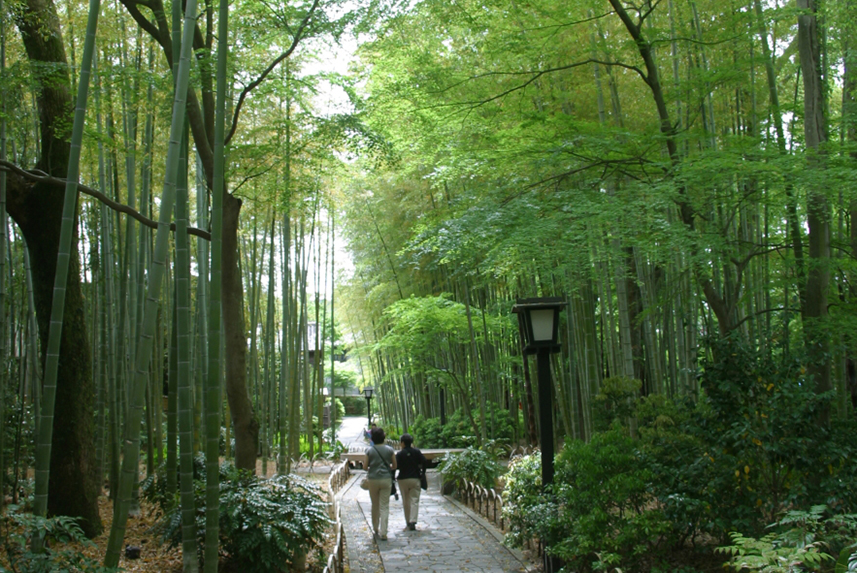
There are some interesting art galleries in Shuzenji as well – you might want to drop by one of them and find a special souvenir to take home.
If you have time, you could expand you explorations to the vicinity surrounding Shuzenji.
A 10-minute drive from the town, you could visit Beer factory, Baird Brewery.
You can bring some snacks and enjoy the beer, and on weekends you can also join the factory tour.
This tour is a fascinating look at a brewery whose owners are passionate about their craft. Begun by Bryan and Sayuri Baird, who learned their trade in the Pacific Northwest of the U.S., they now operate a brewery and chain of taprooms and are enjoying a growing reputation among beer aficionados for their fine and unique beers, made with loving care with bursting with flavor and character.
Niji no Satos is a rather unique leisure park, located inside Shuzenji Nature Park in the Heda Pass near Shuzenji Spa. It’s divided into Western, with an English Village and a 17th century-style Canadian Village, as well as a Western-style flower garden, all accessible by a little steam locomotive. The Japanese area has a quaint Izu Village, with stores selling local specialties, and Takumi Village where you can see traditional paper making, yuzen dyeing, embroidery, ceramics making, and other crafts. The Japanese garden is lovely in any season.
Incidentally, Niji no Sato has its own heliport, and is accessible by helicopter from Tokyo in 40-50 minutes, with breathtaking views of Mt. Fuji on the way.
Return to the ryokan.
In the morning, you could visit chikurin Temple, which was established in 807 by Kobo Daishi as a temple of Shingon Buddhism. It is also known as the place where the second shogun of the Kamakura era, Minamoto no Yoriie, was imprisoned. You can experience Zazen meditation in the morning. The temple is open to the public every Tuesday from 9:15.

Stroll around the lovely onsen town of Shuzenji. Tokko-no-yu is Shuzenji’s oldest hot spring. It’s easy to find – it’s a popular landmark in the center of the town and is now used as an ashiyu footbath.
Continue on to Shigetsuden, which, dating from the 13th century, is the oldest wooden building in Izu. Built to commemorate the second Shogun of Japan, Minamoto-no Yoriie, who died in 1204, Shigetsuden is now used as a library of Buddhist sutras dedicated to his memory.
Next to Shigetsuden, you can find the grave of Shogun Minamoto-no-Yoriie, an important figure in Japanese history. A highly intelligent and capable military leader, he also invited discord with the powerful Hojo clan. He was imprisoned at Shigetsuden and assassinated when he was only 23.
Take a little rest at Chaan Fuyo and have Japanese matcha green tea and some sweets.
There are lots of small shops and cafés in the town, and for a peaceful respite you might stop by Chikurin no komichi, a small bamboo glade, to rest and ease your mind.

There are some interesting art galleries in Shuzenji as well – you might want to drop by one of them and find a special souvenir to take home.
If you have time, you could expand you explorations to the vicinity surrounding Shuzenji.
A 10-minute drive from the town, you could visit Beer factory, Baird Brewery.
You can bring some snacks and enjoy the beer, and on weekends you can also join the factory tour.
This tour is a fascinating look at a brewery whose owners are passionate about their craft. Begun by Bryan and Sayuri Baird, who learned their trade in the Pacific Northwest of the U.S., they now operate a brewery and chain of taprooms and are enjoying a growing reputation among beer aficionados for their fine and unique beers, made with loving care with bursting with flavor and character.
Niji no Satos is a rather unique leisure park, located inside Shuzenji Nature Park in the Heda Pass near Shuzenji Spa. It’s divided into Western, with an English Village and a 17th century-style Canadian Village, as well as a Western-style flower garden, all accessible by a little steam locomotive. The Japanese area has a quaint Izu Village, with stores selling local specialties, and Takumi Village where you can see traditional paper making, yuzen dyeing, embroidery, ceramics making, and other crafts. The Japanese garden is lovely in any season.
Incidentally, Niji no Sato has its own heliport, and is accessible by helicopter from Tokyo in 40-50 minutes, with breathtaking views of Mt. Fuji on the way.
Return to the ryokan.
- Day 3
- Shuzenji
Today you may relax at the ryokan.
Or you could opt for a sea fishing excursion with a guide. Make an early start and travel to Toi to board a fishing boat that will take you on a fishing adventure. The depth of water varies from 48m to as deep as 2,500m and you will have a chance to catch a variety of local fish, which change with the seasons. These include the mighty Maguro, as well as mackerel, Moroko, hairy stingfish, Japanese squid, sawedged perch and more.
*Advance booking is required.
*Availability is subject to the season.
If you prefer more relaxed sightseeing, you may visit Numazu fishing port for lunch.
The port is active and vibrant all year round, and over 30 restaurants stand side by side, offering delicious fresh seafood caught from Suruga Bay every day.
You could drop by the impressive Viewo, a huge water gate that protects the town from tsunami. It is the largest such structure in Japan, and has a viewing platform on top with magnificent views of Mt. Fuji and out over Suruga Bay.
*Closed Tuesdays
Just 10 minutes from the fishing port is Numazu Goyotei Memorial Park. This Imperial villa was built in 1893, in the Meiji era, and was used by the Imperial family for a long time. Today the villa is provided for free to the city of Numazu for free due to aging and became a memorial park and open to public.
Depending on the season, you may also enjoy fruit picking in this area. Strawberries are especially fine here, and are one of the renowned local products of Shizuoka Prefecture. Picking (and eating) them is a very pleasant way to spend a few hours.
Instead of fruit picking you may take a short hiking course at Darumayama resthouse and gaze at Mt. Fuji for awhile. You can take in the spectacular views of the famous mountain, and then perhaps enjoy a hike amid the beautiful nature of the Izu Peninsula with the stunning outlook of Mt. Fuji in the background. The hike takes about 1 hour.
Return to the ryokan.
Or you could opt for a sea fishing excursion with a guide. Make an early start and travel to Toi to board a fishing boat that will take you on a fishing adventure. The depth of water varies from 48m to as deep as 2,500m and you will have a chance to catch a variety of local fish, which change with the seasons. These include the mighty Maguro, as well as mackerel, Moroko, hairy stingfish, Japanese squid, sawedged perch and more.
*Advance booking is required.
*Availability is subject to the season.
If you prefer more relaxed sightseeing, you may visit Numazu fishing port for lunch.
The port is active and vibrant all year round, and over 30 restaurants stand side by side, offering delicious fresh seafood caught from Suruga Bay every day.
You could drop by the impressive Viewo, a huge water gate that protects the town from tsunami. It is the largest such structure in Japan, and has a viewing platform on top with magnificent views of Mt. Fuji and out over Suruga Bay.
*Closed Tuesdays
Just 10 minutes from the fishing port is Numazu Goyotei Memorial Park. This Imperial villa was built in 1893, in the Meiji era, and was used by the Imperial family for a long time. Today the villa is provided for free to the city of Numazu for free due to aging and became a memorial park and open to public.
Depending on the season, you may also enjoy fruit picking in this area. Strawberries are especially fine here, and are one of the renowned local products of Shizuoka Prefecture. Picking (and eating) them is a very pleasant way to spend a few hours.
Instead of fruit picking you may take a short hiking course at Darumayama resthouse and gaze at Mt. Fuji for awhile. You can take in the spectacular views of the famous mountain, and then perhaps enjoy a hike amid the beautiful nature of the Izu Peninsula with the stunning outlook of Mt. Fuji in the background. The hike takes about 1 hour.
Return to the ryokan.
- Day 4
- Departure
Check out from the ryokan and travel back to Tokyo by the limited express Odoriko/Super Odoriko from Shuzanji station.
You may also travel to Kyoto by shinkansen from Mishima station, two hours.







